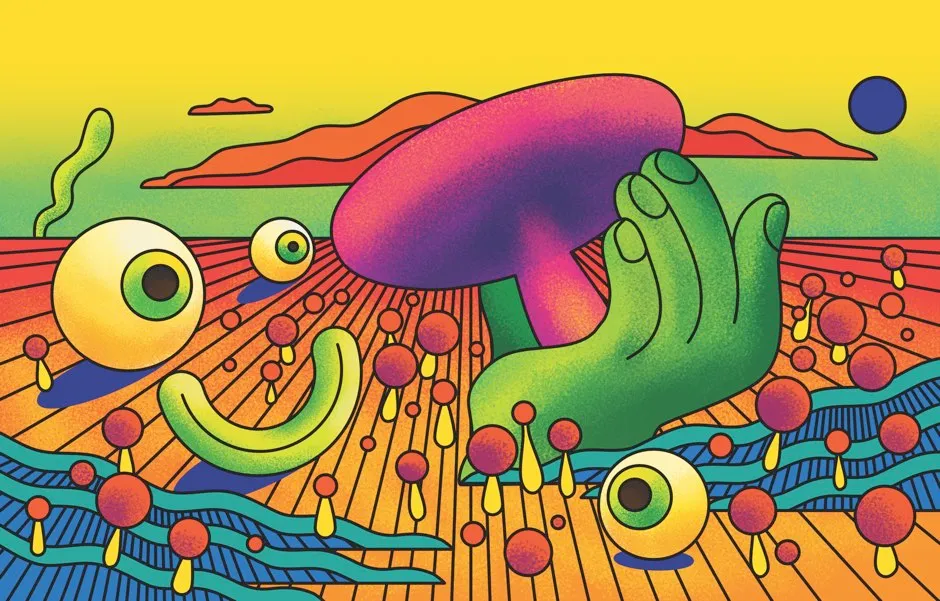It looks like 2020 will be the year that products made from mushrooms go mainstream. Strong yet biodegradable, and created using minimal resources, mushroom-based materials could help solve several of society’s most pressing problems at once.
Yes, it’s hard to imagine a pair of shoes, a lamp or even a house made of those soggy grey things sitting next to your baked beans as you tuck into a full English. But the edible part of a mushroom is just its fruiting body: below ground, these remarkable organisms grow a network of fine, branching digestive filaments known as mycelium, which when compacted forms a tough and lightweight material.
These days, mycelium is getting designers, engineers and materials scientists very excited indeed: not only can it be grown using unwanted resources like food leftovers or farm waste, it will grow into any shape required using a mould (ahem) and it is relatively easy to grow at scale, requiring only a food source, air and water.
And one of those food sources can be rubbish for which we have no use, such as nut husks, potato peelings, coffee cups, discarded textiles and even industrial waste.
In fact, for almost any type of waste you can think of, there seems to be a species of fungi that enjoys breaking it down. There are even species of fungi that will soak up toxic heavy metals like lead and arsenic, and some that will grow on radioactive waste. Back in 2011, a species of fungus was found in the Amazon that feasts on the tough plastic polyurethane.
Read more about mushrooms:
- Scientists develop new battery – from a mushroom!
- Psychedelic healing: could magic mushrooms help reboot the brain?
- Mushrooms unlock energy-producing potential of cyanobacteria
- Genetically engineered mushrooms used to kill malaria-carrying mosquitoes
So far, mycelium has been used to produce everything from lightweight plastic-free packaging to super-strong and fire-proof breeze blocks. Designers are also starting to see mycelium’s potential to ‘grow’ clothes, shoes, vases, lamps, tables and other products that have a positive environmental impact.
Compared to manufacturing with plastic or concrete, which involves mining materials from the ground and treatment at high temperatures, it’s a no-brainer. The only by-product? Edible mushrooms.
Some experts even believe that mushrooms and fungi could help us grow food or buildings on other worlds like Mars. A species of fungus that could feed on the barren Martian soil could colonise vast tracts of land and slowly make it more hospitable for humans – a concept known as terraforming.

That’s still a long way off, but here on Earth, waste-munching mushrooms are already being put to excellent use in environmental clean-up projects. One example of this is in the Ecuadorian rainforest at the site of the world’s largest oil spill, where a collaboration of scientists and environmental groups plan to grow giant petrol-gobbling mushrooms on the toxic soil.
And that’s all before we even consider the wider potential of the world’s 1.4 million species of fungi in other areas of biotechnology and medicine. This incredibly diverse group of organisms has evolved many unique adaptations for survival in an immense number of different habitats and niches, and represent a vast untapped source of potentially useful compounds, such as antimicrobials and antivirals. The future is fungal.
Read more wild ideas in science:
As Albert Einstein once said, “imagination is more important than knowledge.” So with that in mind, here are our picks of the most radical theories in science.